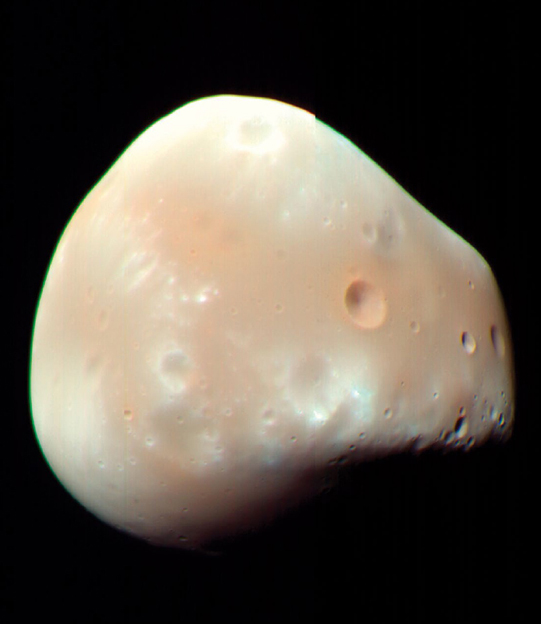1877
Deimos
Asaph Hall (1829–1907)
By the mid- to late nineteenth century, the use and refinement of the telescope had allowed astronomers to discover two new planets and more than a dozen new moons in the outer solar system. Except for the discovery of a small number of main belt asteroids, however, few discoveries were made in the inner solar system.
The American astronomer and US Naval Observatory professor Asaph Hall was surprised to learn that few astronomers had made serious attempts to search for any moons around Mars. To be sure, it was a difficult problem because of the intense glare from the Red Planet itself, but Hall knew that he had unique access to an excellent instrument: a 26-inch (66-centimeter) Alvan Clark and Sons refractor that was, at the time, the largest refracting telescope in the world.
Mars and the Earth pass each other approximately every 26 months during what is called an opposition (Mars is opposite the Sun). Hall took advantage of the excellent opposition of 1877 and the high image quality of the Clark refractor to search for satellites of Mars. On August 11, 1877, he spotted a faint object near and moving with the planet; on subsequent nights he was able to verify that it was a moon in orbit around the planet, and that it was accompanied by a second moon even closer to Mars. A colleague suggested naming the moons after the Greek sons of Mars, Dread (Deimos) and Fear (Phobos), and the names stuck.
Hall and others realized that Deimos must be very small, but little more was known until space missions to Mars began observing the satellites as opportunities arose. Deimos has since been discovered to indeed be tiny—9.3 × 7.5 × 6 miles (15 × 12 × 10 kilometers)—irregular, and asteroid-like in shape, and with a cratered but strangely smooth and muted surface texture. With a density of about 1.5 grams per cubic centimeter and no evidence of an icy surface, astronomers speculate that Deimos may be a relatively porous, rocky object with a composition similar to some of the chondritic meteorites, the building blocks of Earth and other planets. It may take a dedicated mission to Deimos, however, to figure out if it really is a captured asteroid.
SEE ALSO Mars (c. 4.5 Billion BCE), Meteorites Come from Space (1794), Search for Vulcan (1859), White Dwarfs (1862), Phobos (1877).
The strange, smooth, reddish surface of the Martian moon Deimos, photographed on February 21, 2009, by the Mars Reconnaissance Orbiter spacecraft. The moon is only about 7.5 miles (12 kilometers) wide.
